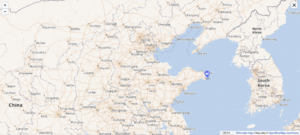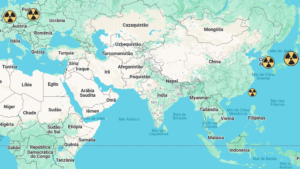China has launched three astronauts into orbit to begin occupancy of its new space station.
The three astronauts will spend three months aboard the Tianhe module, about 380 km (236 miles) above Earth.
It will be China’s longest manned space mission to date and the first in nearly five years.
The crew successfully docked at the space station just over seven hours after launch.
The Shenzhou-12 capsule lifted off atop its Long March 2F rocket on June 17, 2021.

The liftoff from the Jiuquan satellite launch center in the Gobi Desert was at 09:22 Beijing time (01:22 GMT).
The launch and subsequent mission are another demonstration of China’s growing confidence and capability in the space domain.
In the past six months, the country has returned rock and soil samples from the moon’s dark surface to Earth and landed a six-wheeled robot on Mars – highly complex and challenging endeavors.
What is the mission of the first Chinese space station crew?
The main goal of Commander Nie Haisheng and his team on the Shenzhou-12 mission is to put the 22.5-ton Tianhe module into service.
This Tianhe module is a 16.6-m long and 4.2-m wide cylinder and was launched in April 2021.
It is the first and main component of what will eventually be a nearly 70-ton outpost orbiting the earth. It will have living quarters, science labs, and even a Hubble-class telescope to view the cosmos.
The various elements will be launched successively over the next few years. Construction will be accompanied by regular cargo deliveries as well as crew expeditions.
The food, fuel, and equipment that the trio will need during their stay aboard Tianhe were delivered by a robotic freighter last month.
This freighter is still connected, and the men will make unpacking their supplies their first task once they get settled. Included in the delivery are two spacesuits that they will need to conduct spacewalks outside Tianhe.
Why is the establishment of the first Chinese space station important?
In recent years, China has made no secret of its space ambitions.
It has invested significant funds in its space efforts, and in 2019 it will become the first country to send an unmanned “rover” to the other side (the dark side) of the moon.
As for the space station, China had to do all the development on its own, in part because it was excluded from the International Space Station project.
The United States, which leads the development and maintenance of the ISS “International Space Station” with Russia, Europe, Canada and Japan, will not cooperate with the Asian nation in orbit.
For its part, China says it is open to foreign involvement and participation in its station. In the first instance, this means scientific experiments hosted by the station.
For example, the crew of Shenzhou-12 will conduct cancer experiments conducted from Norway. And outside the station, there is a telescope spectrograph developed by India to study ultraviolet emissions coming from deep space, from stars like those that exploded long ago.
But in the long term, there will probably also be visits to the station by non-Chinese citizens/astronauts.
Russia, which has shared technology in the past with China, has mentioned the possibility of sending its cosmonauts. Even, Russia has also already threatened to end its partnership with the US on the ISS in 2025.
Why is there a new space race between the United States and China?
Space is becoming the fifth “warefare domain”. The other 4 warefare domains are:
- Earth
- Sea
- Sky
- Cyber
The domain of space is becoming militarily strategic because of the dependence that militaries and modern societies in general have on their satellites. The United States, as well as many other advanced countries, depend on their satellites for observation/espionage of other countries, for tracking and navigation of missiles, aircraft, warships, and other large advanced weapons systems.
In the event of conflict on land, countries can destroy enemy satellites to disorient their military operations. In 2007 China launched a ballistic missile and destroyed one of its satellites as a demonstration of its capabilities in space; as well as to leave a warning to its potential rivals.
Thus, a new space race and a militarization of space is expected in the coming years because whoever gains this dominance, will have the ease and security to keep the others.
The United States, while still using NASA (the U.S. Space Agency) as the main engine of its space ambitions, also relies on private companies such as Elon Musk’s (Tesla founder) “Space X” to advance its efforts and maintain the dominance in space gained since landing on the moon in 1969.
Besides maintaining the Space Station with astronauts and supplies, the main American goals in space are unmanned trips with “rovers” to the moon and Mars, and the Artemis mission to stick man back on the moon by 2025.















[…] Chinese Communist Party (CCP), which came to power in China almost 72 years ago, was founded in […]
[…] formed working groups on COVID-19 vaccines, climate change, technological innovation, and resilience of global supply […]
[…] A good example is China, which evidently did not participate in the first dispute but in 2019 managed to land the Chang’e-4 probe on the Moon, which made a cotton seed sprout on the lunar surface for the first time in history and shared the objective. of structuring an on-site research base. […]
[…] China: […]
[…] is trying to use these Chinese government-controlled fishermen “under the curtain” to get the bonus – territory and […]